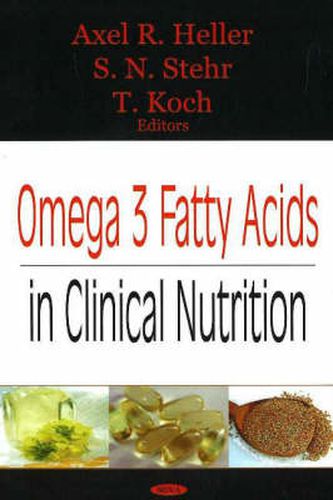Readings Newsletter
Become a Readings Member to make your shopping experience even easier.
Sign in or sign up for free!
You’re not far away from qualifying for FREE standard shipping within Australia
You’ve qualified for FREE standard shipping within Australia
The cart is loading…






During the past decades, intensive collaborative research in the fields of chronic and acute inflammatory disorders has resulted in a better understanding of the pathophysiology and diagnosis of these diseases. Modern therapeutic approaches remain unsatisfactory and shock, sepsis and multiple organ failure (MOF) are still a great challenge in intensive care medicine. Furthermore, treatment of inflammatory diseases like rheumatoid arthritis, ulcerative colitis or psoriasis represents an unresolved problem as well. Many factors contribute to the complex course of inflammatory reactions. Microbiological, immunological and toxic agents are able to initiate the inflammatory response by activating a variety of humoural and cellular mediators. In the early phase of inflammation interleukins and lipid-mediators are excessively released and play a crucial role in the pathogenesis of organ dysfunction. Cellular lipid membranes represent a dynamic high turnover barrier system, which separate the intracellular from the extracellular space and easily adapt to respective demands. In addition to this barrier function membrane lipids (arachidonic acid) can be oxygenized to biologically active lipid mediators (eicosanoids). These function as local mediators which can quickly reach considerable concentrations and, due to their short half life, act in intercellular microenvironments.Two omega-3 polyunsaturated fatty acids (omega-3 FA) eicosapentaenoic acid (EPA) and docosahexaenoic acid (DHA) are mainly found in maritime sources, as opposed to omega-6 polyunsaturated fatty acids found in terrestrial sources (the typical western diet). Contemporary nutritional habits, emphasising industrially produced vegetable oils and animal fats, have disturbed this balance, resulting in a proportional decrease of omega-3 FA. This book presents an update of the pathophysiological impact of lipid mediators in inflammatory disorders and summarises the recent development of therapeutic approaches.
$9.00 standard shipping within Australia
FREE standard shipping within Australia for orders over $100.00
Express & International shipping calculated at checkout
During the past decades, intensive collaborative research in the fields of chronic and acute inflammatory disorders has resulted in a better understanding of the pathophysiology and diagnosis of these diseases. Modern therapeutic approaches remain unsatisfactory and shock, sepsis and multiple organ failure (MOF) are still a great challenge in intensive care medicine. Furthermore, treatment of inflammatory diseases like rheumatoid arthritis, ulcerative colitis or psoriasis represents an unresolved problem as well. Many factors contribute to the complex course of inflammatory reactions. Microbiological, immunological and toxic agents are able to initiate the inflammatory response by activating a variety of humoural and cellular mediators. In the early phase of inflammation interleukins and lipid-mediators are excessively released and play a crucial role in the pathogenesis of organ dysfunction. Cellular lipid membranes represent a dynamic high turnover barrier system, which separate the intracellular from the extracellular space and easily adapt to respective demands. In addition to this barrier function membrane lipids (arachidonic acid) can be oxygenized to biologically active lipid mediators (eicosanoids). These function as local mediators which can quickly reach considerable concentrations and, due to their short half life, act in intercellular microenvironments.Two omega-3 polyunsaturated fatty acids (omega-3 FA) eicosapentaenoic acid (EPA) and docosahexaenoic acid (DHA) are mainly found in maritime sources, as opposed to omega-6 polyunsaturated fatty acids found in terrestrial sources (the typical western diet). Contemporary nutritional habits, emphasising industrially produced vegetable oils and animal fats, have disturbed this balance, resulting in a proportional decrease of omega-3 FA. This book presents an update of the pathophysiological impact of lipid mediators in inflammatory disorders and summarises the recent development of therapeutic approaches.